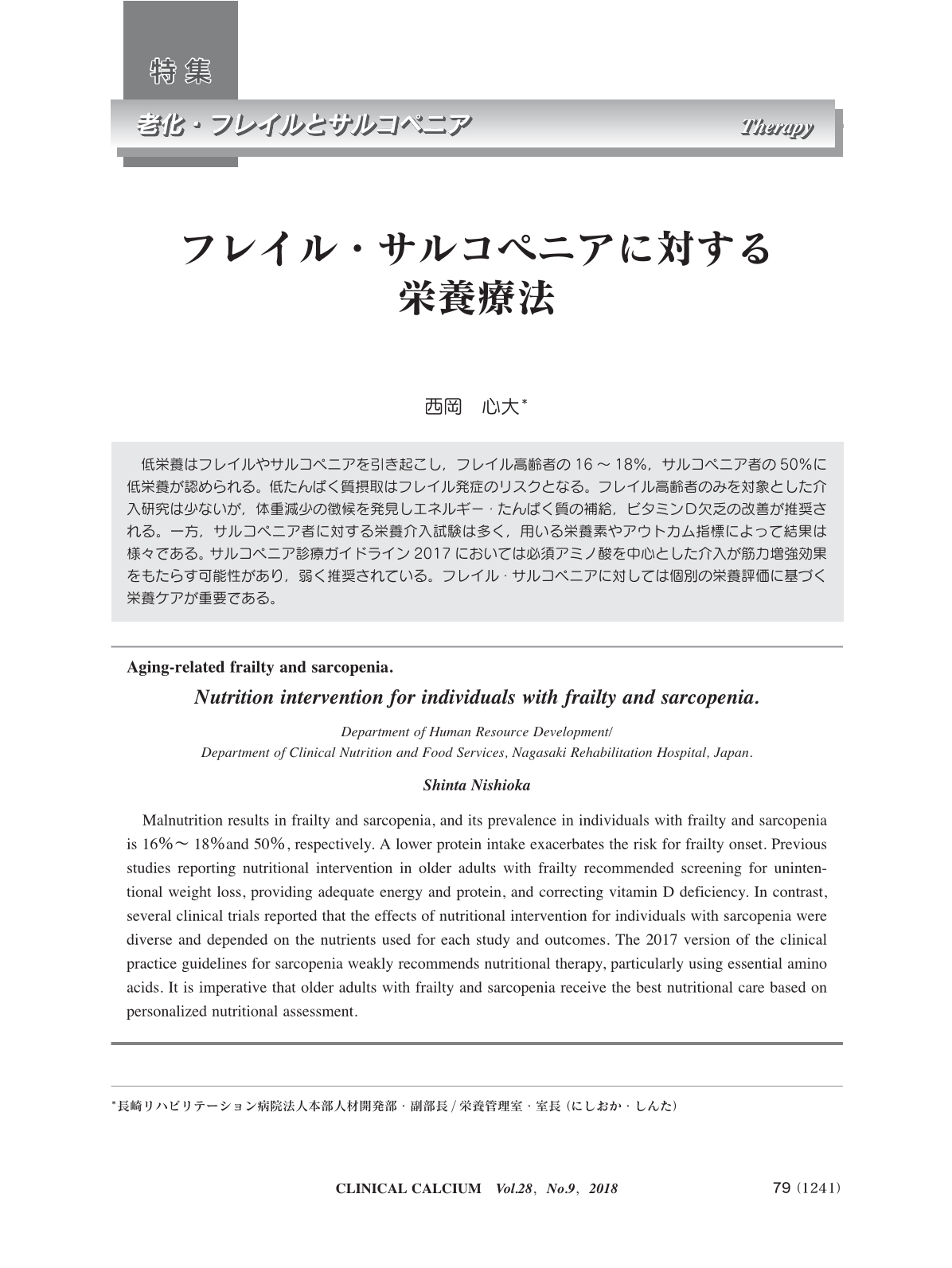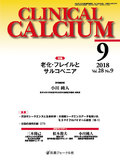Japanese
English
- 有料閲覧
- Abstract 文献概要
- 1ページ目 Look Inside
- 参考文献 Reference
低栄養はフレイルやサルコペニアを引き起こし,フレイル高齢者の16~18%,サルコペニア者の50%に低栄養が認められる。低たんぱく質摂取はフレイル発症のリスクとなる。フレイル高齢者のみを対象とした介入研究は少ないが,体重減少の徴候を発見しエネルギー・たんぱく質の補給,ビタミンD欠乏の改善が推奨される。一方,サルコペニア者に対する栄養介入試験は多く,用いる栄養素やアウトカム指標によって結果は様々である。サルコペニア診療ガイドライン2017においては必須アミノ酸を中心とした介入が筋力増強効果をもたらす可能性があり,弱く推奨されている。フレイル・サルコペニアに対しては個別の栄養評価に基づく栄養ケアが重要である。
Malnutrition results in frailty and sarcopenia, and its prevalence in individuals with frailty and sarcopenia is 16%~18%and 50%, respectively. A lower protein intake exacerbates the risk for frailty onset. Previous studies reporting nutritional intervention in older adults with frailty recommended screening for unintentional weight loss, providing adequate energy and protein, and correcting vitamin D deficiency. In contrast, several clinical trials reported that the effects of nutritional intervention for individuals with sarcopenia were diverse and depended on the nutrients used for each study and outcomes. The 2017 version of the clinical practice guidelines for sarcopenia weakly recommends nutritional therapy, particularly using essential amino acids. It is imperative that older adults with frailty and sarcopenia receive the best nutritional care based on personalized nutritional assessment.



